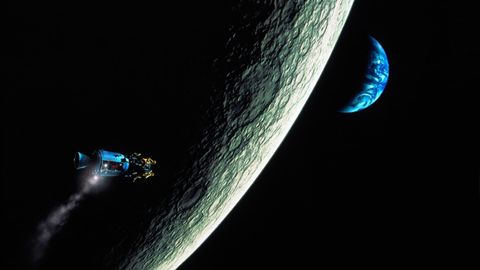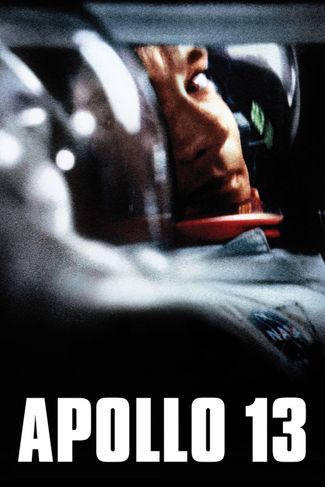
On July 20, 1969, astronaut Jim Lovell hosts a gathering for friends to witness Neil Armstrong's historic first steps on the Moon via television during the Apollo 11 mission. Lovell, who had previously orbited the Moon on Apollo 8, tells his wife, Marilyn, that he intends to return to the Moon to walk upon its surface.
Just three months later, while Lovell is leading a VIP tour of NASA’s Vehicle Assembly Building, his supervisor Deke Slayton reveals that Lovell’s crew will fly on Apollo 13 instead of Apollo 14, swapping missions with Alan Shepard's team. Lovell, alongside Ken Mattingly and Fred Haise, begins training for their journey. However, days before the launch in April 1970, Mattingly is exposed to German measles, prompting the flight surgeon to insist on his replacement with Mattingly's backup, Jack Swigert. Reluctantly, Lovell agrees to the change when Slayton warns that his crew might be pushed to a future flight. As launch day nears, Marilyn experiences a troubling dream about Lovell's potential death in space and decides not to attend the Kennedy Space Center for his unprecedented fourth launch. She later reassesses her decision and surprises him by showing up.
On the day of the launch, Flight Director Gene Kranz gives the green light at Mission Control in Houston. As the Saturn V rocket ascends, the second stage engine shuts down earlier than expected, yet the spacecraft still achieves its Earth parking orbit. After a successful third stage burn sends Apollo 13 on its way to the Moon, Swigert maneuvers the Command Module, Odyssey, to dock with the Lunar Module, Aquarius, detaching it from the spent rocket.
Three days into the mission, at the direction of Mission Control, Swigert activates the liquid oxygen stirring fans. An electrical short leads to an explosion in one tank, emptying its contents into space and causing the spacecraft to spin uncontrollably. The second tank is soon found to be leaking as well. Consumables manager Sy Liebergot persuades Kranz that shutting down two of Odyssey's three fuel cells is the best approach to manage the leak, but this strategy fails. With only one fuel cell operational, mission protocols necessitate an abandonment of the Moon landing. Lovell and Haise activate Aquarius to serve as a "lifeboat," while Swigert turns off Odyssey to conserve battery power for their return to Earth. Kranz instructs his team to focus on bringing the astronauts home, stating firmly that "failure is not an option." Consumables manager John Aaron enlists Mattingly’s help to devise a procedure to restart Odyssey for the journey back.
As the crew gazes down at the Moon below, Lovell reflects on his lost aspiration to walk on its surface and redirects his team's focus to the urgent matter of their safe return. Operating on minimal power and limited water supply in Aquarius, the crew struggles with freezing temperatures, and Haise develops a urinary tract infection. Swigert expresses concern that Mission Control may be hiding the true severity of their situation; in turn, Haise blames Swigert’s inexperience for the mishap, but Lovell intervenes to calm the tension. When Aquarius's carbon dioxide filters become depleted, the gas levels rise dangerously high. Ground control urgently devises a makeshift solution to adapt the Command Module's incompatible filters for use in the Lunar Module. With Aquarius’s navigation systems offline, the crew manually executes a crucial course correction by steering the Lunar Module...
